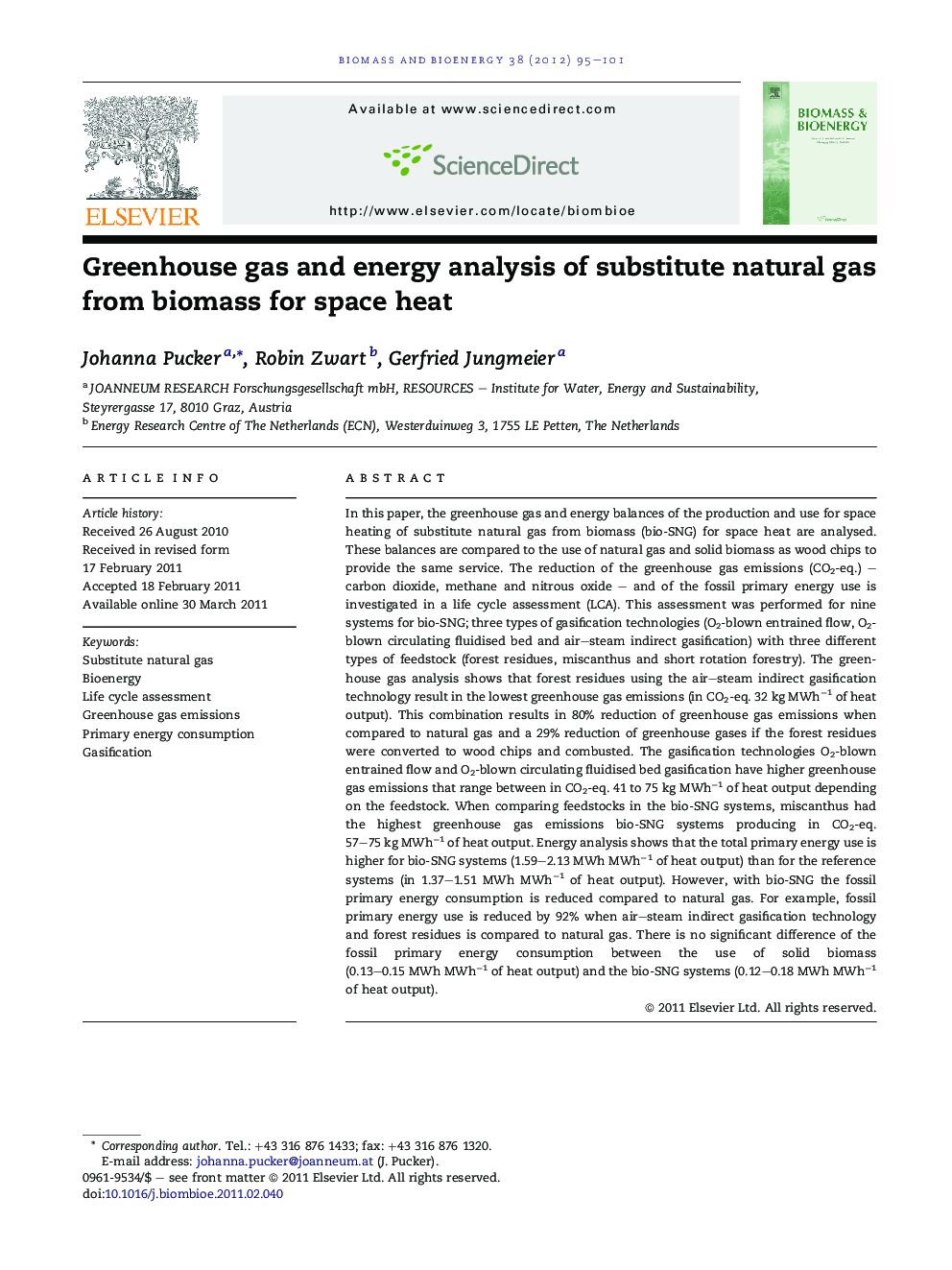| Article ID | Journal | Published Year | Pages | File Type |
|---|---|---|---|---|
| 677638 | Biomass and Bioenergy | 2012 | 7 Pages |
In this paper, the greenhouse gas and energy balances of the production and use for space heating of substitute natural gas from biomass (bio-SNG) for space heat are analysed. These balances are compared to the use of natural gas and solid biomass as wood chips to provide the same service. The reduction of the greenhouse gas emissions (CO2-eq.) – carbon dioxide, methane and nitrous oxide – and of the fossil primary energy use is investigated in a life cycle assessment (LCA). This assessment was performed for nine systems for bio-SNG; three types of gasification technologies (O2-blown entrained flow, O2-blown circulating fluidised bed and air–steam indirect gasification) with three different types of feedstock (forest residues, miscanthus and short rotation forestry). The greenhouse gas analysis shows that forest residues using the air–steam indirect gasification technology result in the lowest greenhouse gas emissions (in CO2-eq. 32 kg MWh−1 of heat output). This combination results in 80% reduction of greenhouse gas emissions when compared to natural gas and a 29% reduction of greenhouse gases if the forest residues were converted to wood chips and combusted. The gasification technologies O2-blown entrained flow and O2-blown circulating fluidised bed gasification have higher greenhouse gas emissions that range between in CO2-eq. 41 to 75 kg MWh−1 of heat output depending on the feedstock. When comparing feedstocks in the bio-SNG systems, miscanthus had the highest greenhouse gas emissions bio-SNG systems producing in CO2-eq. 57–75 kg MWh−1 of heat output. Energy analysis shows that the total primary energy use is higher for bio-SNG systems (1.59–2.13 MWh MWh−1 of heat output) than for the reference systems (in 1.37–1.51 MWh MWh−1 of heat output). However, with bio-SNG the fossil primary energy consumption is reduced compared to natural gas. For example, fossil primary energy use is reduced by 92% when air–steam indirect gasification technology and forest residues is compared to natural gas. There is no significant difference of the fossil primary energy consumption between the use of solid biomass (0.13–0.15 MWh MWh−1 of heat output) and the bio-SNG systems (0.12–0.18 MWh MWh−1 of heat output).
► Greenhouse gas and energy balances of bio-SNG for space heating. ► Comparison to natural gas and solid biomass. ► Results depend on feedstock and gasification technology used. ► Bio-SNG can be beneficial alternative to natural gas.
